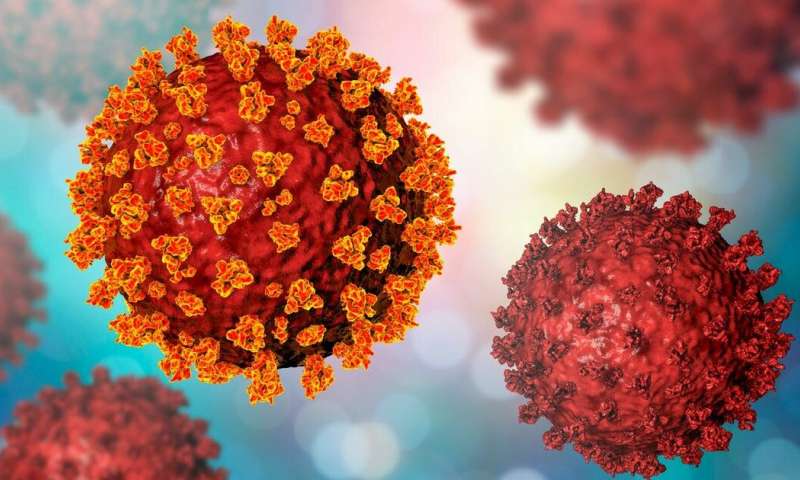Normally, the ACE2 enzyme helps regulate our blood pressure. The enzyme sits on the surface of cells, including cells in the lungs, but in connection with COVID-19 it has been found that ACE2 also functions as a gateway for the virus.
“Different viruses have different ways of accessing our cells—as the virus must, of course, get into the cell to be able to replicate, and the coronavirus uses ACE2 to gain access. For this reason, we’re investigating what the concentration of ACE2 means for the course of the disease, if you get COVID-19,” explains MD and Ph.D. Tue Wenzel Kragstrup from the Department of Biomedicine at Aarhus University. The preliminary results have just been published in the scientific journal PLOS ONE.
As mentioned, ACE2 is part of the surface of the cells, but ACE2 can also be chopped off and found in the blood, and measurements show that we have widely varying concentrations in our blood.
With the help of comprehensive data from patients treated at Massachusetts General Hospital, Tue Wenzel Kragstrup and his colleagues attempt to uncover whether the concentration of ACE2 can perhaps be used as a biomarker to predict the risk of dying as a result of COVID-19.
“This is the pivotal question,” says Tue Wenzel Kragstrup, although he also acknowledges that it cannot yet be answered, among other things, because we currently lack an easily accessible and applicable test for ACE2.
However, this is not the case for another enzyme, ACE1. Here, there is a standard and routinely used test for when doctors e.g. need to diagnose the pulmonary disease sarcoidosis.
“We know that there is a correlation between ACE1 and ACE2,” says Tue Wenzel Kragstrup. “If our findings can be recreated by measuring ACE1, this can be used in the clinical work right away.”
Tue Wenzel Kragstrup’s normal area of research is biomarkers and rheumatological diseases, but when everything closed down due to the COVID-19 pandemic, he felt obliged to use his knowledge of biomarkers in particular, and in this way, join the fight against the new disease.
“I discovered that Massachusetts General Hospital in Boston, U.S., had published a huge amount of data and analyses on their website of 306 patients with COVID-19, together with data and analyses from 78 patients who had tested negative for COVID-19. The information is encrypted so that it’s not possible to identify individuals, but the cohort of patients were followed for 28 days, so you can see what happened to them,” says Tue Wenzel Kragstrup, who is fascinated by the international collaboration in the fight against COVID-19.
He retrieved the dataset in the form of a “really huge spreadsheet” and then, with the help of biostatisticians and other experts, began analyzing the vast amount of data—and it was here that he became aware of the important role ACE2 appears to play.
“We’re familiar with a heightened concentration of ACE2 in connection with cardiovascular diseases, but the concentration is not, for example, higher in connection with diabetes, which we can also see in our study. But we now hope that ACE2 can help explain excess mortality from COVID-19,” says Tue Wenzel Kragstrup.
Aarhus University


